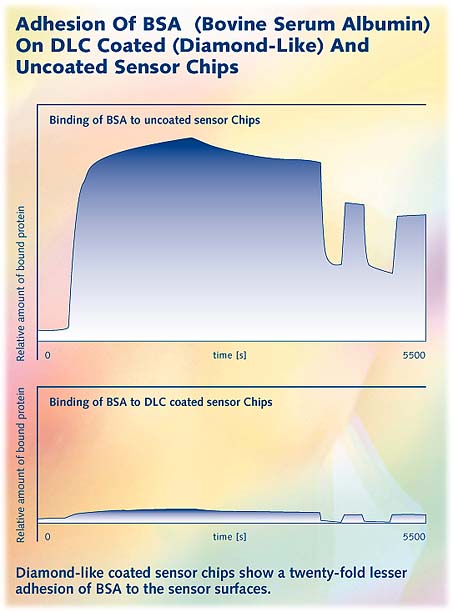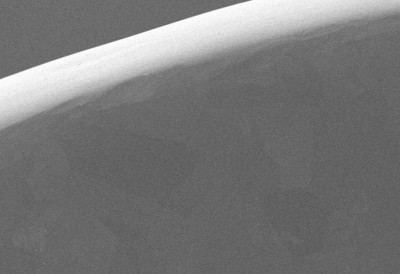BioDiamond
Adhesion of Bovine Serum Albumin on Coated DLC (Diamond-Like) and Uncoated (SiO2 / TiO2) Sensor Chips
The purpose of the investigation was to examine whether a diamond-like coated surface has a lower adhesion for proteins compared to an uncoated one.
The testing has been conducted using the Biosensor ASI 1400 from ASI Company, Switzerland which has a size of 15 x 50 mm.
In the centre of the sensor a flow-through cell is mounted over the integrated optical device. The analyte is pumped through the flow cell over the sensor surface (method: 5 mg/ml BSA (bovine serum albumin) solved in PBS buffer pH 7,4). The biosensor shows real-time monitoring of the binding event.
After the adsorptive coating of the sensor with BSA, the sensor was rinsed with buffer. The adsorption of proteins on the sensor surface could be calculated from the sensogram.
The result was a twenty-fold less adhesion of BSA on a coated sensor chip compared with an uncoated one.

The experiments showed a good biocompatibility of DLC coated surface. Irreversible, non-specific adhesion of proteins often results in denaturation of the protein structure. This results in the presentation of antigen determinants which cause the immune system to react, i.e. the denatured proteins will be identified as foreign and an inflammation will occur. Diamond-like coated surfaces showed only minimal adhesion of proteins at the surface. Furthermore, those adhesions are reversible and do not result in denaturations of protein. Inflammation will not take place at these surfaces.

BioDiamond F 16 under the scanning electron microscope,
2,500 x magnification. Notice the round and smooth edge.
